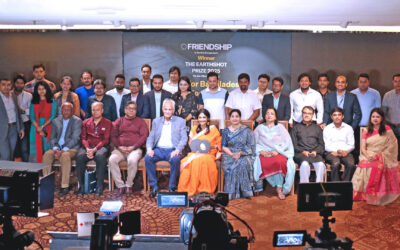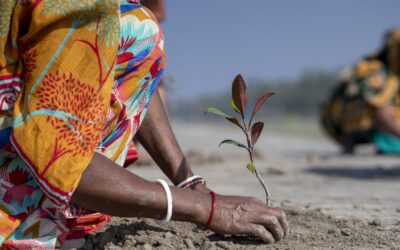Friendship’s Cultural Preservation Efforts include the once-common sampan boat, now a relic of the past.

by Syed Abu Sinjan Saadat,
23 February, 2025
The sampan, among a plethora of other classes of wooden boat, was once a common sight along the waters of Chattagram, Kutubdia, and Moheshkhali. Built from solid wood, curved to cut through waves, and strong enough to carry heavy loads, it was a workhorse of Bangladesh’s maritime trade. Large sampans transported salt, fish, and goods across the region, while smaller ones navigated narrow rivers and coastal inlets, ferrying passengers and supplies. These boats were built by hand, crafted by artisans who understood wood and water in equal measure. Now, the large sampan is all but extinct, its presence reduced to a few surviving vessels and fading memories.
The decline of the sampan was slow at first. As motorised and steel-bodied boats became more common, the need for wooden cargo boats shrank. At the same time, traditional boatbuilding materials became harder to source, and the number of skilled craftsmen dwindled. The smaller boats still exist in some places, mostly in Kutubdia, but the large ones—once a backbone of coastal trade—have almost disappeared. Without intervention, the knowledge of how to build them will vanish as well.

Friendship Cultural Preservation has been working to ensure that doesn’t happen. In 2006, the social purpose organisation took on the challenge of building one of the largest sampans in recent history, working with the few remaining boatbuilders from Kutubdia who still knew the craft. Since then, Friendship has continued its efforts by creating museum-grade replicas ranging from 1m to over 7.5m, each built with the same care and attention to detail as the originals.
Preserving the sampan boat isn’t just about rebuilding boats—it is about making sure future generations understand their significance. Friendship has digitally archived the structure of these vessels, creating detailed 3D models that capture their dimensions and craftsmanship. This ensures that even if the physical boats disappear, the knowledge of how they were made won’t be lost. Too often, the sampan is confused with other traditional boats, like the Chand Nouka, which can still be seen somewhat in coastal Cox’s Bazar, but careful documentation helps preserve its distinct identity.

Friendship’s work goes beyond preservation—it is about honouring Bangladesh’s maritime heritage and ensuring that traditional craftsmanship is recognised and valued. By rebuilding sampans, documenting their history, and sharing their story, Friendship is keeping this piece of Bangladesh’s culture alive. The waters may change, and the world may move forward, but as long as these boats are remembered, the legacy of the sampan will endure.




